A Bird's Eye View With Wildlife Photographer Ryan Carter
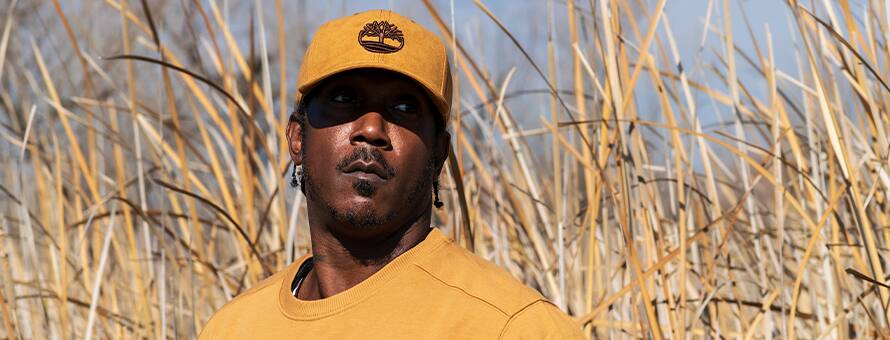
Ryan Carter, wildlife photographer
Ryan Carter is a wildlife photographer, author and graphic designer who has been celebrated for promoting conservation and documenting birds of prey — also called raptors. But before starting online photography and graphic design courses at Southern New Hampshire University (SNHU), he didn’t know this is where his career could take him.
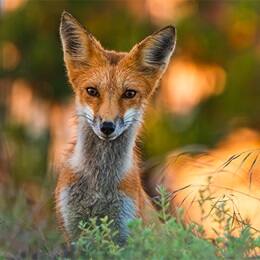
“I was already working as a photographer with an eye for what looked good and what didn’t, but SNHU allowed me to build on that foundation and expand my horizons,” said Carter, who promotes his work under Ryan Carter Media TV. “I transitioned from shooting primarily models to exploring product photography, and eventually, I found my passion in wildlife photography.”
Recently, he shared what it's like to be a wildlife photographer and how his time at SNHU helped him carve a space for himself in the field.
Finding Focus
Carter was initially a self-taught photographer. When he started taking courses, he was surprised to discover gaps in his knowledge.

“It wasn’t until I attended SNHU that I realized how much more I needed to learn — especially about the technical aspects of photography, like understanding my camera fully,” he said.
Throughout his studies, Carter said he also learned to find opportunities and create a stellar portfolio — lessons that he noted were invaluable in developing his career. From there, he quickly found a rare level of success in his field.
In his first year of business, Carter landed 58 magazine covers. “Before SNHU, I wouldn’t have had the tools or confidence to pull that off successfully," he said.
His coursework taught him how to adapt to company growth and navigate the business landscape. “SNHU prepared me to be more than just a creative professional," he said. "It shaped me into an entrepreneur."
The connections he made further shaped Carter's path. Although he didn't have a strong support system outside of school, he formed meaningful relationships with his instructors and advisors during his time at SNHU.
I was a troubled youth, a product of my environment, and as a foster child, I was emancipated at the age of 17,” he said. “When I say this, I speak with extreme gratitude and deep appreciation — SNHU became my support system and driving force.

In particular, he noted that his instructor Colleen Vandenberg was his biggest supporter while at SNHU and remains a mentor today.
“Her unwavering support felt like the family I never had,” Carter said. “While the entire SNHU community played a role in shaping my path, her guidance and belief in me were transformative, providing the encouragement I needed to succeed both in school and in my professional career.”
Vandenberg first met Carter while teaching his "Lighting for Photography" course. She said he was a hardworking and passionate student who set a high standard for future students in the course.
"Since then, we were able to keep in touch through Instagram, allowing me to see the wonderful professional work he creates with the tools he acquired at SNHU and elsewhere," Vandenberg said. "We were able to shift from a teacher/student dynamic to that of professional peers."
Carter said Vandenberg also encouraged him to specialize in his genre of choice.
“Initially, I focused on product and model photography, but SNHU equipped me with the skills to excel in any genre,” Carter said. “What makes this journey even more special is that school helped me identify and embrace a niche market — wildlife photography — that had rarely, if ever, been explored by someone from my demographic."

Close Encounters
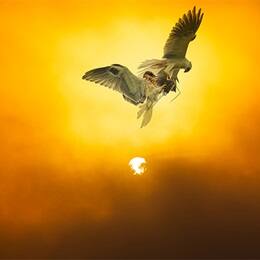
Carter quickly found a focus within his niche after getting started in wildlife photography. When he met someone who was a fan of his raptor photos, he realized he was becoming known for them and decided to specialize. Since then, Carter has become an expert on birds of prey.
My work centers on tracking raptors and exploring their natural habitats, which are rich in diversity and include hawks, eagles, falcons and owls,” he said.
On a personal level, Carter said his career is deeply fulfilling, allowing him to connect with diverse cultures and constantly grow his expertise. "There's so much about wildlife to learn," he said. "It's a never-ending story."
Through tracking birds of prey, he's learned a great deal about their migrations in particular. According to Carter, the North American Bird Banding Program (NABBP) and Canadian Wildlife Service put bands with identification numbers on certain baby birds. To track the birds, he captures these bands in his photos.
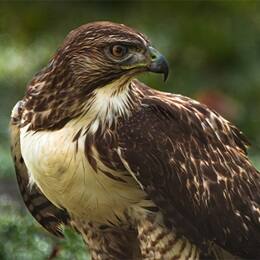
“I'll get very close, enough to get the numbers on the bands," he said.
From there, he submits his photos to the government and to birding associations to track where the birds were first banded and how far they've traveled. For example, he photographed a yellow-headed caracara in Los Angeles — more than 2,000 miles from the bird's original habitat.
"This bird is endemic to places like Costa Rica and Panama," he said. "I found that we had hurricanes that basically pushed that bird up into Florida, then there was more hurricanes and storms and tornadoes that maybe pushed it over to like Oklahoma, then from Oklahoma it went to Texas and then from Texas it ended up in California."
Carter said that many birds like this one are migrating to new areas as a result of climate change. His personal research helps to paint a clearer picture of how climate change is affecting these birds, bringing awareness to wider environmental concerns. "We're seeing history in the makings right now," he said. "It's unprecedented."
In addition to his research, Carter is using his platform as an author and photographer to promote environmental action. “My mission is to inspire others, contribute to conservation efforts and continue exploring the untamed beauty of the natural world,” he said. "Balancing all of this while traveling frequently and being a single father raising my daughter has been challenging but deeply rewarding."
Taking Flight
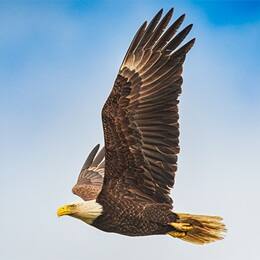
Now, Carter shares his findings, experiences and photographs with a global audience. He’s the author of the book “Birds Prey Too,” and has been interviewed in Bold Journey Magazine. His photography has also been featured by National Geographic and a number of other publications.
"Watching him find his niche and carve out a space in nature and wildlife photography where he truly stands out has been nothing short of inspiring," Vandenberg said. "He is constantly learning, searching out opportunities, but most importantly, creating opportunities for himself."
Carter is also the founder of Photointelligence, a creative media company, and the host of the Keen Vision Podcast which he is developing into a nature-focused live show.
“Right now, I’m immersed in a world of exciting opportunities, including filming for my new show set to release in March, receiving awards, conducting interviews and working on my third and fourth books,” he said.
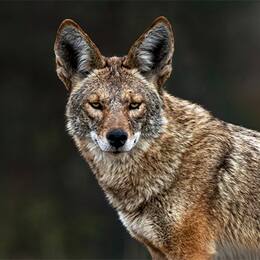
Carter said that being accepted within elite circles in the world of photography has been an honor. “One of the best parts is breaking barriers as the first wildlife photographer from Watts, California, to achieve recognition and respect as an elite professional in this field,” he said. He's especially proud to share his successes with his hometown.
“It’s a privilege to not only represent where I come from but also inspire others to dream beyond their circumstances,” he said. “For me, every trip, every photograph, and every experience reinforces how extraordinary this journey truly is.”
To learn more about Carter’s journey and projects, you can check out his books or visit his website.
Discover more about SNHU’s online digital photography degree: Find out what courses you'll take, skills you’ll learn and how to request information about the program.
Mars Girolimon '21 '23G is a staff writer at Southern New Hampshire University where they earned their bachelor's and master's, both in English and creative writing. In addition to their work in higher education, Girolimon's short fiction is published in the North American Review, So It Goes by The Kurt Vonnegut Museum & Library, X-R-A-Y and more. They're currently writing their debut novel, which was Longlisted for The First Pages Prize. Connect with them on LinkedIn.
Explore more content like this article
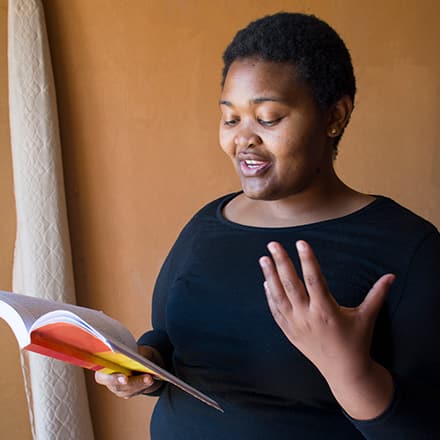
Why is Poetry Important? Celebrating National Poetry Month

Meet Betty White Stamp Artist Dale Stephanos, SNHU Graphic Design Grad
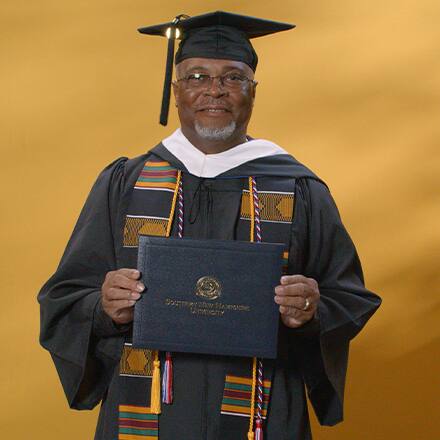
SNHU Spotlight: Dennis Peacock, BA in Graphic Design Grad
About Southern New Hampshire University

SNHU is a nonprofit, accredited university with a mission to make high-quality education more accessible and affordable for everyone.
Founded in 1932, and online since 1995, we’ve helped countless students reach their goals with flexible, career-focused programs. Our 300-acre campus in Manchester, NH is home to over 3,000 students, and we serve over 135,000 students online. Visit our about SNHU page to learn more about our mission, accreditations, leadership team, national recognitions and awards.

